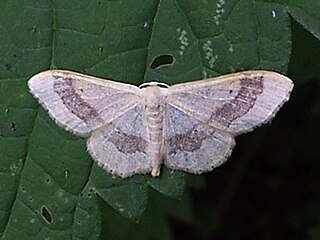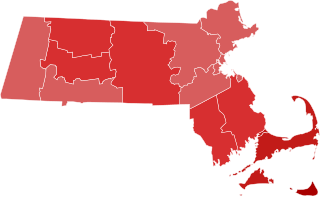
Noctiluca scintillans is a marine species of dinoflagellate that can exist in a green or red form, depending on the pigmentation in its vacuoles. It can be found worldwide, but its geographical distribution varies depending on whether it is green or red. This unicellular microorganism is known for its ability to bioluminesce, giving the water a bright blue glow seen at night. However, blooms of this species can be responsible for environmental hazards, such as toxic red tides. They may also be an indicator of anthropogenic eutrophication.

Milky seas, also called mareel, is a luminous phenomenon in the ocean in which large areas of seawater appear to glow translucently. Such occurrences glow brightly enough at night to be visible from satellites orbiting Earth.

The firefly squid, also commonly known as the sparkling enope squid or hotaru-ika in Japan, is a species of squid in the family Enoploteuthidae. W. scintillans is the sole species in the monotypic genus Watasenia.

Idaea, sometimes called Hyriogona, is a large genus of geometer moths. It was erected by Georg Friedrich Treitschke in 1825. They are found nearly worldwide, with many native to the Mediterranean, the African savannas, and the deserts of western Asia.

Cyanopepla is a genus of moths in the subfamily Arctiinae. The genus was erected by James Brackenridge Clemens in 1861.

Hypolycaena is a butterfly genus in the family Lycaenidae. Hypolycaena species are found in the Australasian, Indomalayan and Afrotropical realms.

Iolaus is a genus of butterflies in the family Lycaenidae. The genera Argiolaus, Epamera, Iolaphilus and Stugeta are often included in Iolaus. Iolaus species are found in the Afrotropical realm.There are ca. 130 species in Iolaus
Phlogothauma is a genus of moths in the family Sesiidae.

Cyanopepla fastuosa is a moth of the subfamily Arctiinae first described by Francis Walker in 1854. It is found in Venezuela and Brazil and on Jamaica.
Cyanopepla alonzo is a moth of the subfamily Arctiinae. It was described by Arthur Gardiner Butler in 1876. It is found in Colombia, Venezuela and Peru.
Cyanopepla cinctipennis is a moth of the subfamily Arctiinae. It was described by Francis Walker in 1865. It is found in Colombia and Ecuador.
Cyanopepla hurama is a moth of the subfamily Arctiinae. It was described by Arthur Gardiner Butler in 1876. It is found in Ecuador, Bolivia and the Amazon region.
Cyanopepla imperialis is a moth of the subfamily Arctiinae. It was described by Herbert Druce in 1883. It is found in Ecuador.
Cyanopepla masia is a moth of the subfamily Arctiinae. It was described by Paul Dognin in 1889. It is found in Ecuador.

Cyanopepla micans is a moth of the subfamily Arctiinae. It was described by Gottlieb August Wilhelm Herrich-Schäffer in 1854. It is found in Colombia and Venezuela.
Cyanopepla dognini is a moth of the subfamily Arctiinae. It was described by Gustaaf Hulstaert in 1924. It is found in Paraguay and Brazil.

The Euchromiina are a subtribe of tiger moths in the family Erebidae. It was described by Arthur Gardiner Butler in 1876. Many species in the subtribe are mimics of wasps. Euchromiina have always been considered closely related to the subtribe Ctenuchina due to their similarity to moths and wasps. These two subtribes make up around 3,000 valid species, the majority of which occur in the Neotropics.

The 1872 Massachusetts gubernatorial election was held on November 5, 1872. Republican governor William B. Washburn was re-elected to a second term in office over businessman Francis W. Bird, a Liberal Republican nominated with support of the Democratic Party.











